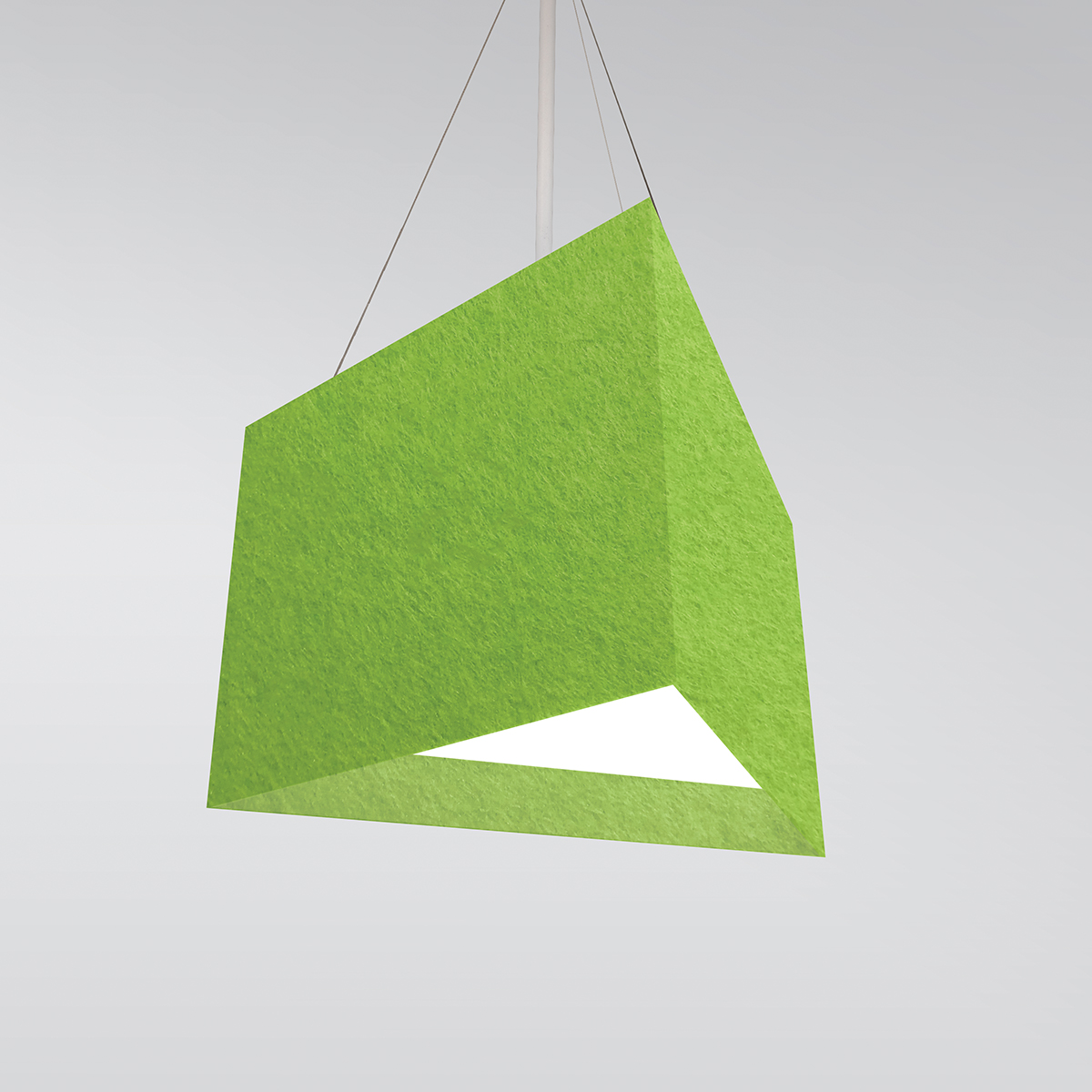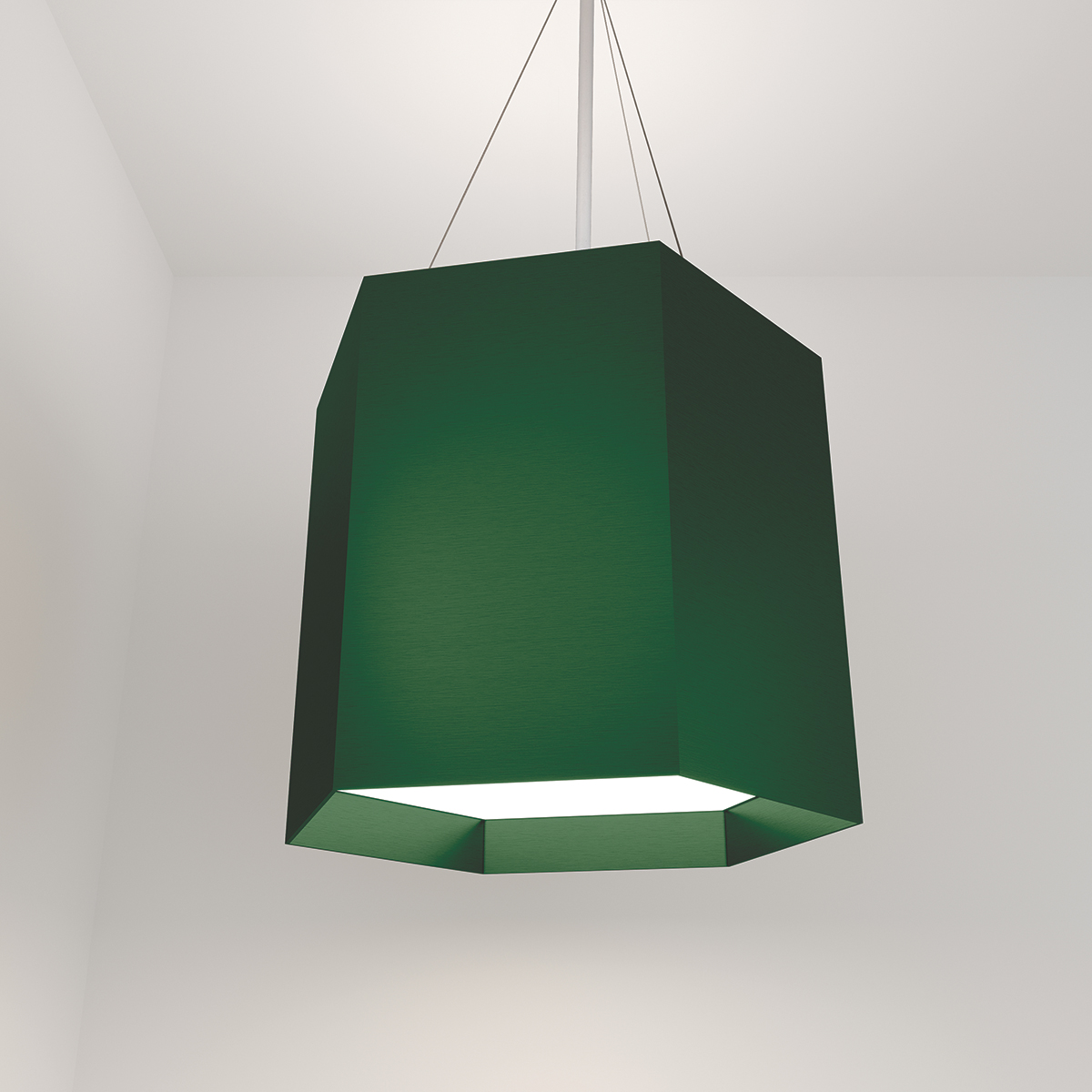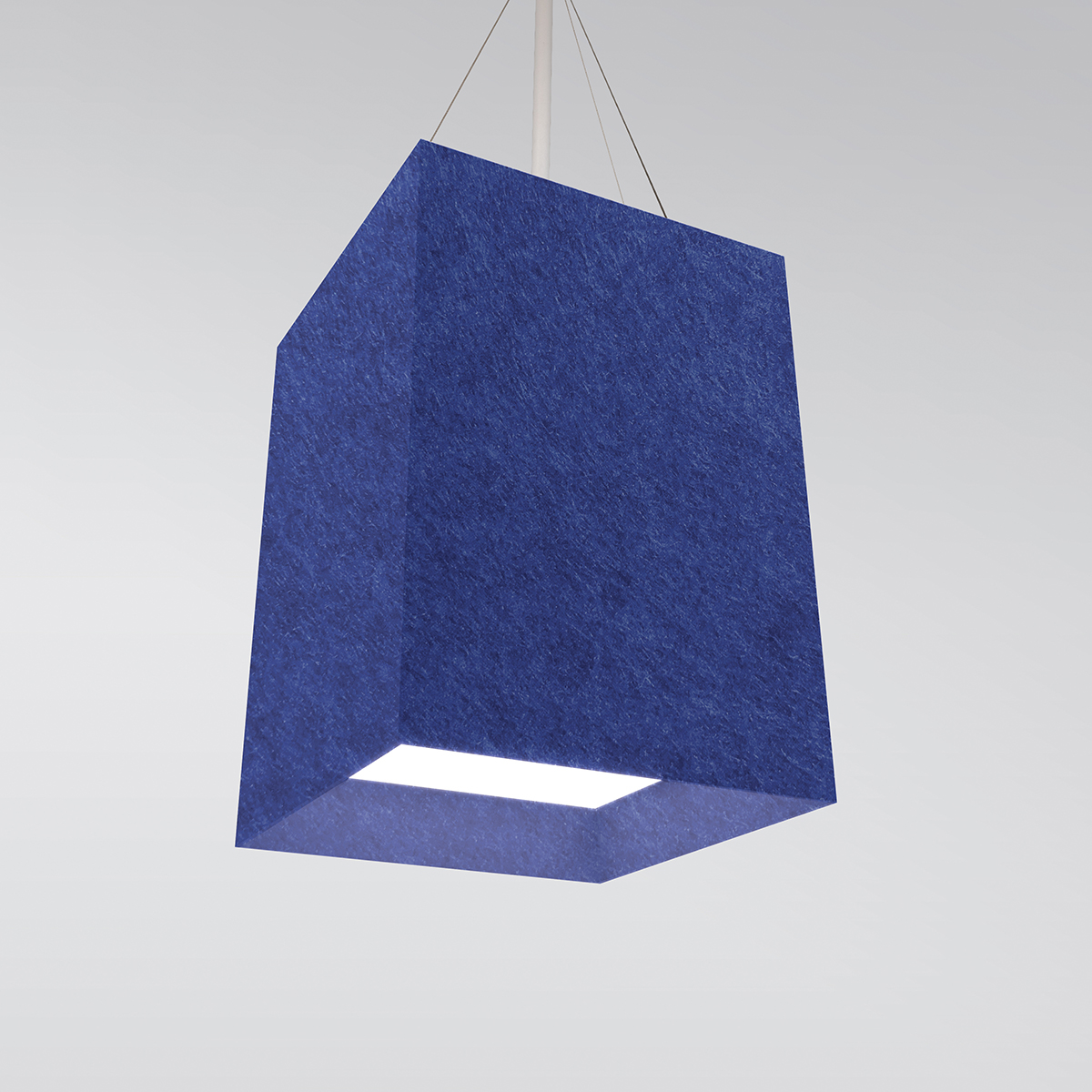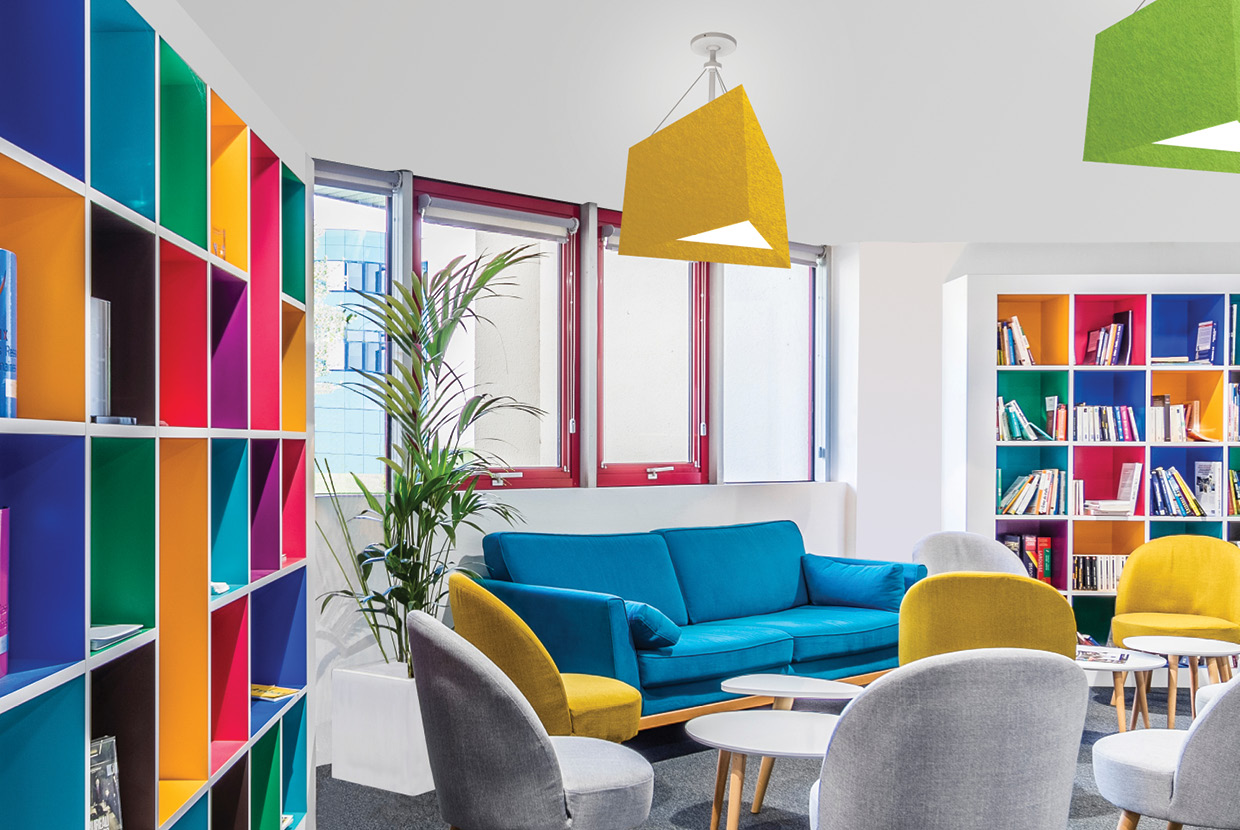
What is Acoustic Lighting?

How to Design Spaces with Acoustic Lighting
In architectural design, the considerations of creating a desirable space is multifold; the acoustic treatment of a space is something that can’t be overlooked. Sound is a key element of any building. Whether a restaurant, school, auditorium, or office building, it is important to have an interior space where acoustics are not overwhelming to its occupants. When a space isn’t properly sound treated, reverberations of human voices can become intensified. This creates an unpleasant loop where people speak louder in order to be heard, again increasing noise levels — making for a potentially unpleasant and stressful environment. However, a way to solve the issue might be unexpected.
If you’re interested in attenuating the noise in your spaces, you should consider installing acoustic lighting. Using an absorbent felt material, Visa Lighting offers a variety of options that can improve the well-being of your building occupants. See how excessive reverberant noise can have a negative impact on the inhabitants of a building, and how Visa Lighting product solutions can help your building achieve WELL and LEED building standards.
Visa Lighting has six different noise level reduction lighting options: Acoustic panels are currently available on our Celest-TR, Celest-SQ, and Celest-HX products with two sizes available in each model.
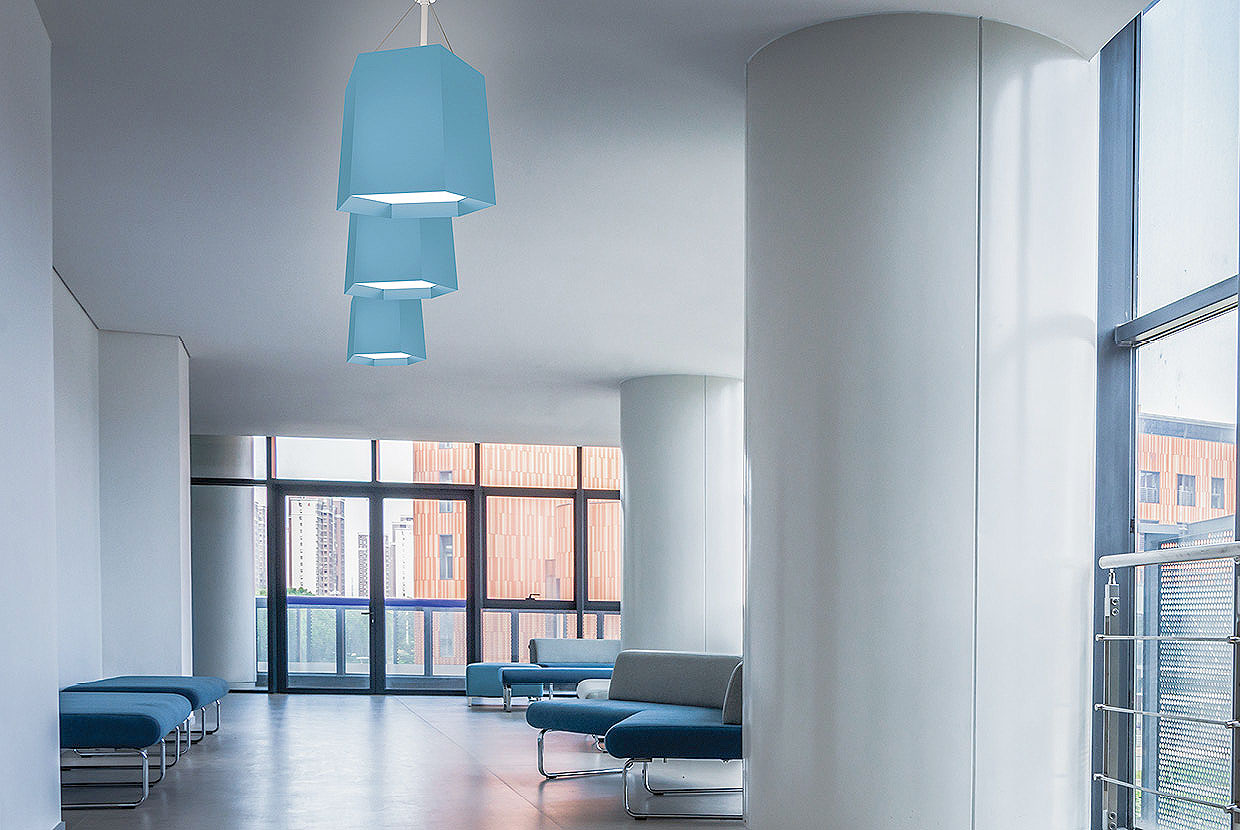
What are WELL and LEED Building Standards?
Created by the International WELL Building Institute, the WELL standard is a certification that designates a building to be built and designed to the benefit, well-being and health of those who inhabit the building. WELL is a performance-based metric on the health of built environments based on seven features: air, water, nourishment, light, fitness, comfort, and mind. While WELL certification takes many factors into account, the acoustics of a building is one of the most important aspects considered during the certification process.
The LEED, or Leadership in Energy and Environmental Design, building standards were designed to focus on buildings and their environmental impact, promoting green building design practices. However, the latest version, LEED v4.1, has taken acoustics into consideration more than it has in the past. In both the Building Design & Construction and Residential (specifically multifamily homes) categories, projects can get credit for improving their acoustic performance. Precise guidelines have been implemented for schools, aiming to limit the HVAC background noise level. Healthcare, hospitality, data centers, warehouses, and distribution centers can all also obtain credit for acoustic performance. To earn credit, the occupied spaces should meet requirements in two of the following categories: HVAC background noise, sound transmission, and reverberation time.
How Acoustics Impact the Health of Building Inhabitants
Excessive noise can contribute detrimentally to the health of a person; from experiencing headaches, increased blood pressure, and heart disease to decreased mental capacity, decreased productivity, sleep disturbances, and overall dissatisfaction when occupying a space. Not only can excessive noise have deleterious effects on health and well-being, it can also contribute to increased difficulty in communicating with others which, for an office, can have a negative impact on productivity. Additionally, spaces with poor acoustic treatment can cause frustration for building occupants seeking private communications.

How Acoustic Lighting Can Help
Having gone over the numerous ways excessive noise can affect the overall wellness of a building’s occupants, let’s take this opportunity to go over how acoustic lighting can help alleviate noise challenges in commercial spaces. If you operate a commercial space, one of the most pressing concerns can be reducing noise levels. While architectural acoustic treatments using absorptive wall panels and careful finish selection are well understood, few building operators know that acoustic light fixtures can also help them reach that goal. With Visa Lighting’s line of acoustic pendant lights made with absorbent felt materials, commercial spaces can allow building occupants to experience a greater level of calmness, wellness, and enjoyment.
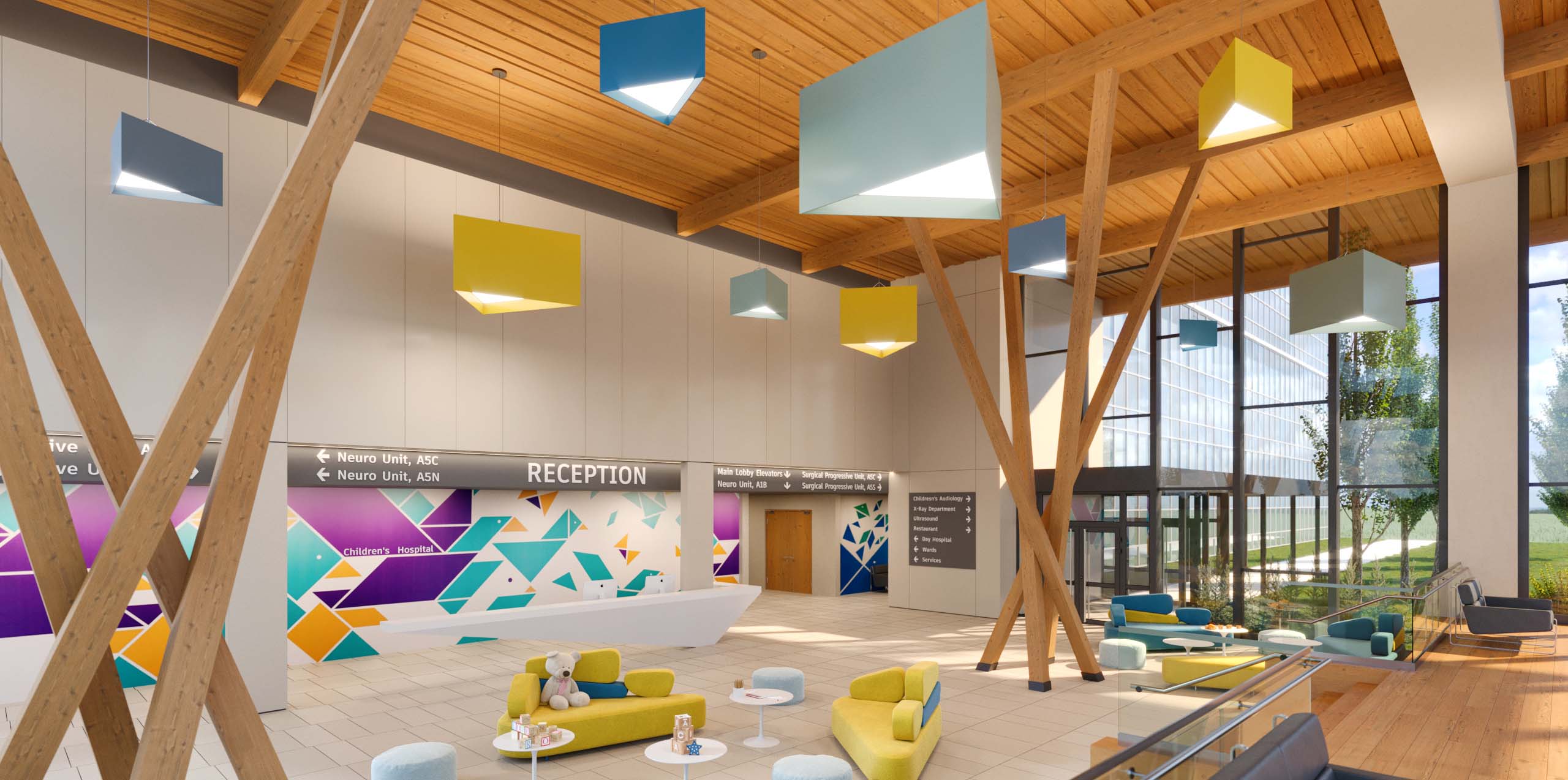
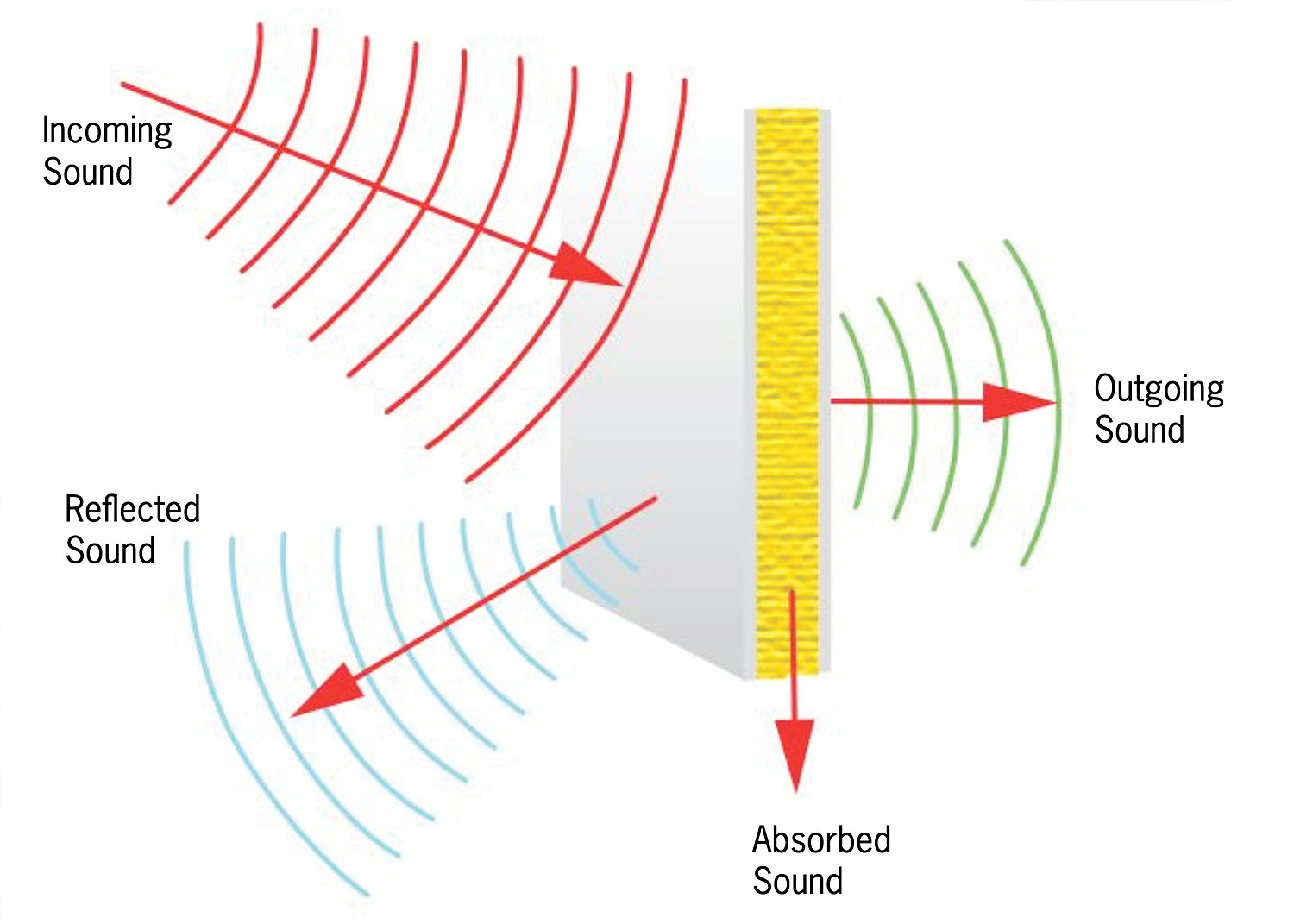
Understanding Building Acoustics and Sound Absorption
Key to understanding how pendant light fixtures can better absorb excessive noise is the Noise Reduction Coefficient, also known as NRC. This value measures how much sound a surface absorbs across the range of typical human speech at 250Hz, 500Hz, 1000Hz, and 2000Hz. This value is measured in sabins, which is the equivalent surface area of an object if it were made of 100 percent sound-absorbent material. In mathematical terms, sabins equals the real area of the surface times the Noise Reduction Coefficient of the surface material. This calculation is crucial when considering the acoustics of any given space; an object with a greater sabins value will be more effective at attenuating reverberant noise than one with a smaller value.
The Visa Lighting Celest pendant light family offers between 5.4 to 21.7 imperial sabins (in square feet) depending on the model chosen. Ultimately, installing multiple sound-absorbing light fixtures will decrease the reverberation time of a space, creating a quieter and more peaceful environment.
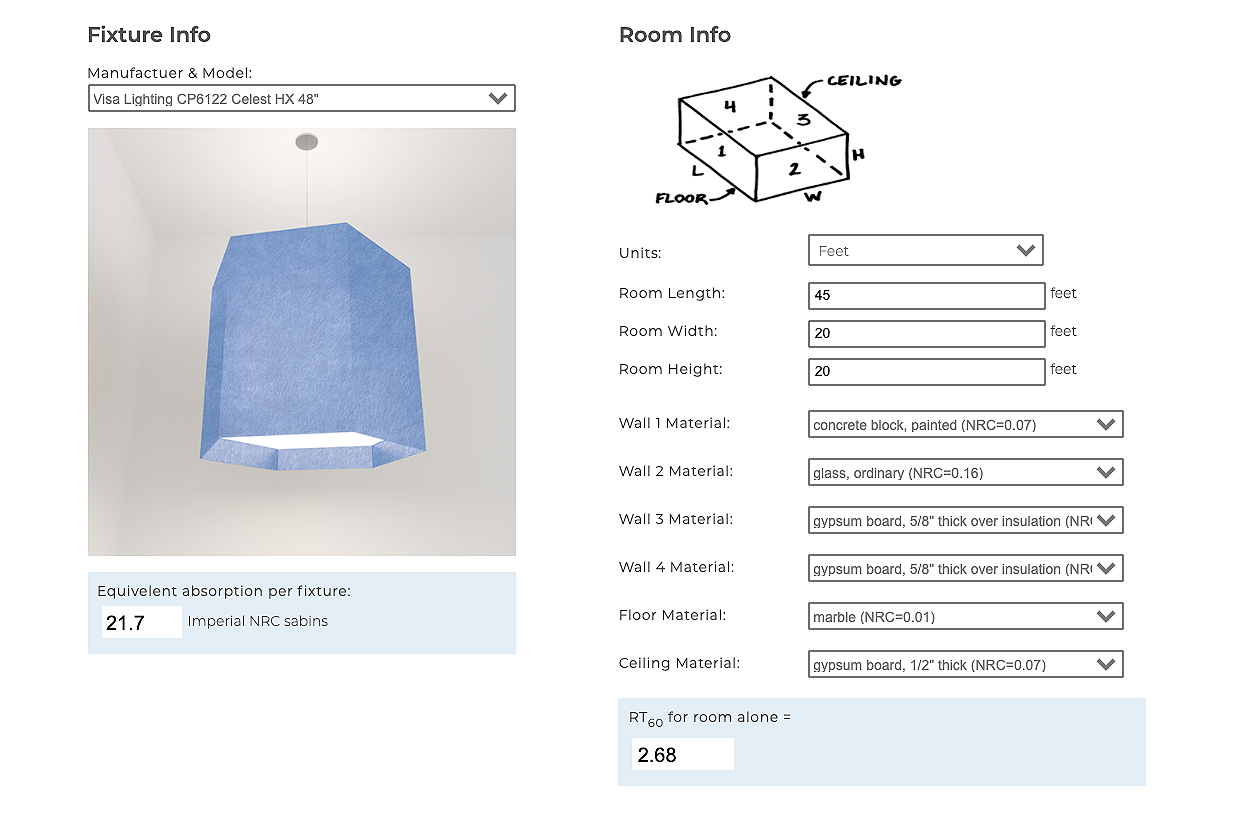
How to Calculate Room Acoustics and Incorporate Acoustic Lighting
The Visa Lighting acoustics calculator provides a quick overview of the acoustics in a room. Simply enter in the room data – including measurements and materials – then select the acoustic light fixture you would like to incorporate. The acoustics calculator uses Sabine’s formula to generate the -60dB reverberation time of your space before and after adding in acoustic lighting. Use this tool to play around with different fixture options and quantities to see what works best to help you reach your goal. A selection of common building materials and their absorption coefficients are built into the calculator, or custom absorption ratings can be used for room surfaces. Reports can be emailed or printed and retained for later use.
Visa Lighting’s Acoustic Ceiling Pendant Options
Currently, Visa Lighting has six different Celest lighting options which can help reduce the noise levels in your building. Acoustic panels are currently available on our Celest-TR, Celest-SQ, and Celest-HX products with two sizes available in each form. You can also take a look at the materials used to dampen sound on this site. The Celest line focuses on simple, aesthetically bold geometric shapes in a vast array of finishes, colors, sizes, shapes, and customization opportunities. These fixtures offer modern, clean design options to any space. Celest pendants have evenly illuminated acrylic bottom lenses that provide high lumen output in a way that comfortably reduces glare, plus two different uplight/downlight distributions to accommodate broad use cases. With high lumen packages, they are ideal for primary light sources in large open spaces like offices, lobbies, theatres, and auditoriums.
Final Thoughts
The importance of noise attenuation for a building’s inhabitants can’t be overstated. Having planned and designed building acoustic treatment to absorb reverberations can aid in creating a more peaceful and enjoyable environment. WELL and LEED building standards emphasize the importance of acoustics, making it crucial to the certification process.
If you’re interested in creating a space that enhances the wellness of the building’s occupants, please consider the various acoustic lighting solutions offered by Visa Lighting.

